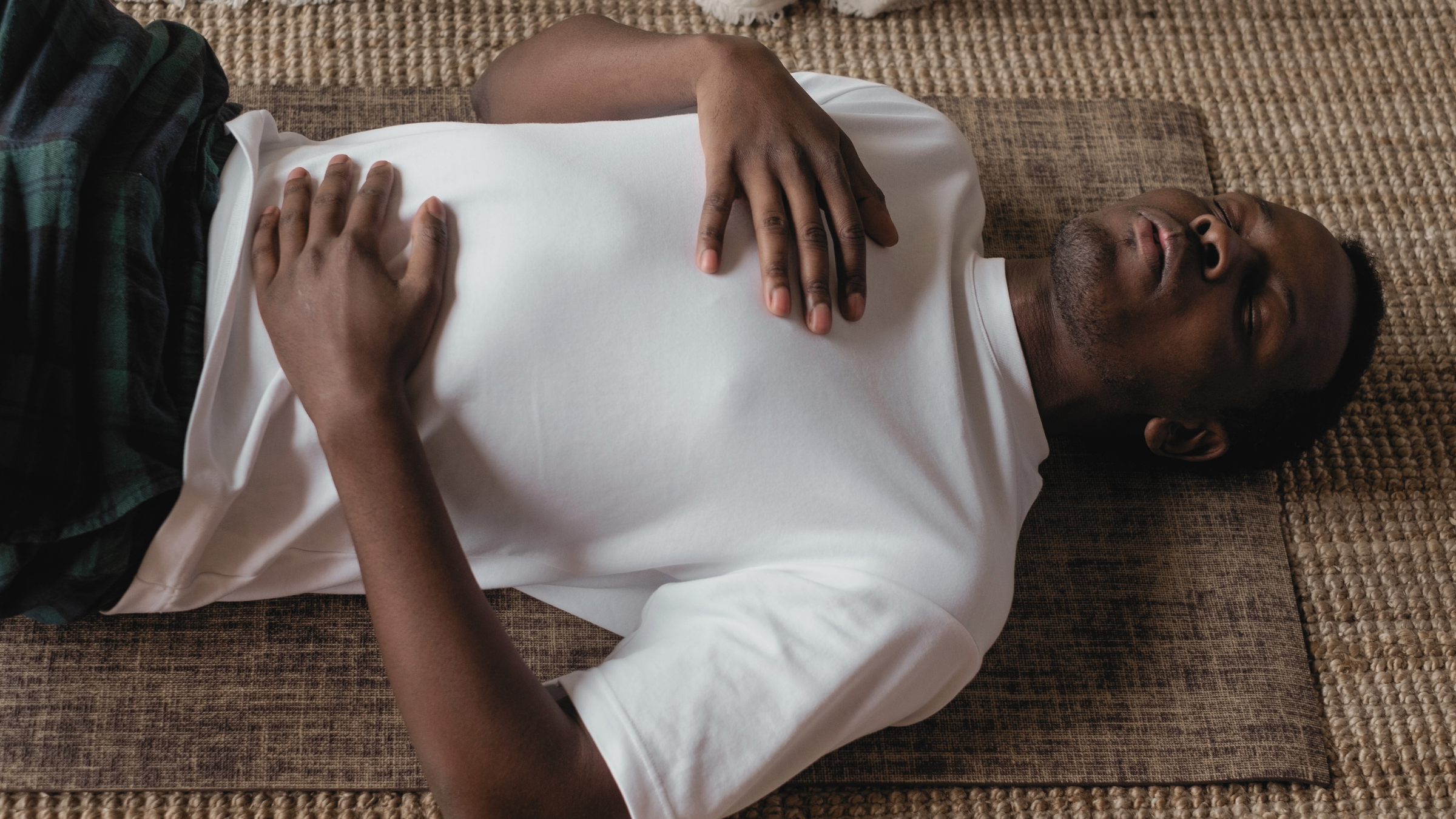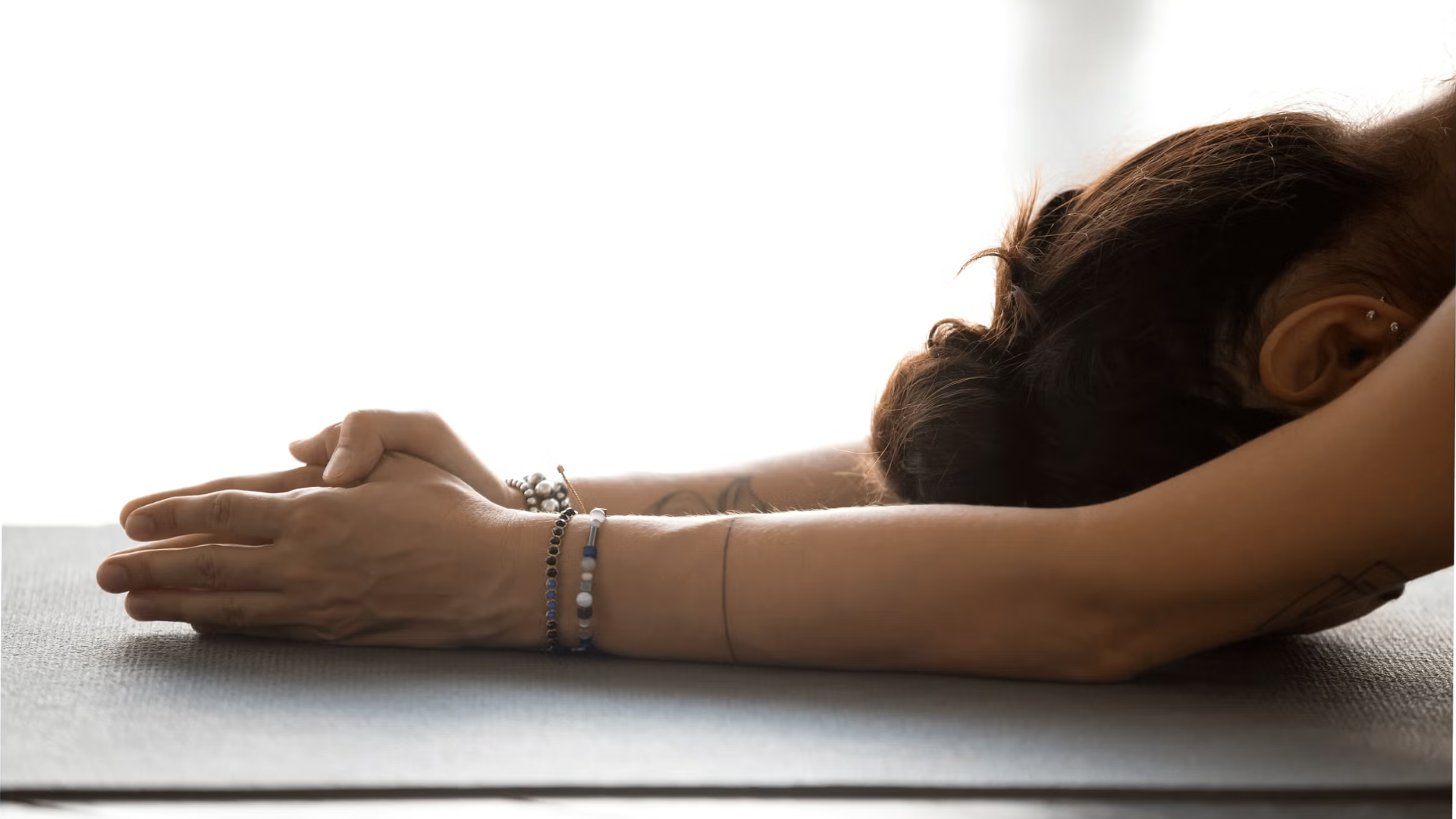Published November 21, 2025 06:15AM
In Yoga Journal’s Archives series, we share a curated collection of articles originally published in past issues beginning in 1975. These stories offer a glimpse into how yoga was interpreted, written about, and practiced throughout the years. This article first appeared in the July 1980 issue of Yoga Journal. Find more of our Archives here.
To the uninitiated, Marichyasana III may look like a twisted pretzel pose, but to the practitioner, it “untwists” the spine from its habitual unevenness. This feeling of freedom in the pose cannot be experienced, however, until the student is able to sit with the legs straight in front and the spinal column fully extended. Therefore, for most Westerners unaccustomed to floor sitting, this is an intermediate level pose.
Essential Elements of the Seated Twist
The Sanskrit name Marichyasana has no literal translation. The asana was named after a sage of antiquity, so the name itself gives little clue to the execution of the pose. Perhaps one of the most interesting aspects of its practice involves the relationship of the whole body to the twist. Obviously the vertebral column and spinal nerves are involved, but without the correct action of the limbs, an elective spinal action cannot be obtained. The base of the pose is the pelvis; it is crucial in this pose, as in all twists, that the top of the pelvis remain parallel to the floor. If it does not, then one side of the spinal column will be lifted more than the other and the twist will not affect the sides of the spine evenly. And if the buttocks lift off the floor when the arms are grasped, they must be placed firmly down again before twisting is continued.
Another crucial element in the base of the pose are the legs. Although the legs are often allowed to be dead in twists, if extended they help to keep the back straight. However, this is impossible if the hamstrings (posterior thigh muscles) are tight, since the hamstrings are attached to the ischial tuberosities (sitting bones). Tightness here can cause the pelvis to tip backward, reversing the lumbar curve and rounding the entire back. Students with this problem should spend more time on asanas which stretch the hamstrings, but in the meantime, the pose can be improved by placing a pad under the buttocks to help rotate the pelvis forward.
Throughout the practice of Marichyasana III, an effort should be made to keep the shoulders even by dropping the forward shoulder near the bent knee while lifting the back shoulders. The shoulder girdle, if held correctly, will aid the twisting of the upper back, just as proper positioning of the pelvic girdle will affect the action of the lower back. Thus Iyengar cites this pose as beneficial in cases of displacement and sprain of the shoulder joint.
This may be especially true for the rear arm because of the action of the head of the humerus (upper arm bone) in the glenoid fossa (depression in the outer shoulder blade where the humerus connects). In Marichyasana III the arm which wraps around the body is cinched into the joint, thereby creating stability. At the same time, the active use of the joint prevents stiffening. The hands can be clasped by holding either the back or front wrist and the head can face either shoulder.
In addition to its effect on the spine, this pose is a powerful heat generator and stimulant to the abdominal region. Iyengar states that it augments the functioning of the liver and spleen. Some believe it also affects the bladder and kidneys—some students have even felt the need to leave class for the restroom during repeated practice of this asana.
The Mindset Shift to Help You Nail Marichyasana III
Psychologically, Marichyasana III is not an overt pose of strength, as Adho Mukha Vrksasana (Handstand) so obviously is. Strength has many elements, just as a rope, which appears to be one piece is actually many smaller woven cords. One element of strength is the quality of resistance which the Handstand reflects. But equally pertinent to understanding strength is the expression of two of its key elements, surrender and persistence. Marichyasana reflects these qualities.
Many people may not understand how surrender can be a part of strength. From a Western perspective, strength is resistance, firmness, tightness, even rigidity. A hard muscle is strong, a soft one weak. But another way of viewing strength sees it as essential to giving in, surrendering. releasing. The well-known analogy of the oak and the willow is apropos here.
By being flexible and adaptable, the willow can weather the extremes of wind while the rigid oak snaps. By letting go into Marichyasana III, the twist is achieved and the benefits from the pose increased. To improve, this surrender must be practiced with persistence; this persistence requires strength, especially of the will.
It should be remembered that surrender in yoga does not come from weakness or from fear of pain. Rather it comes from knowing the importance of an appropriate response. In the practice of any asana, there are areas of the body which should be active and firm and areas which should be soft and stretched. The difficulty is in learning which areas must surrender and which must not. This is the knowledge that leads to the appropriate response.
This knowledge is even more important in living one’s life. There are situations in which it is appropriate to express one’s will, to take an adamant stand, and to refuse to move. Likewise, there are life situations in which that response is disastrous, negative, and wholly inappropriate, even neurotic. In these cases the response should be to surrender. As in the practice of yoga, the difficulty in living life well comes in knowing when it is appropriate to resist, when to surrender.
Marichyasana III teaches the dynamic understanding of surrender, and yoga as a whole gives the student the major tool necessary for knowing the appropriate response to each situation. The ability to detach oneself from a situation and choose an appropriate response is a tool which yoga can bestow. Detachment does not mean disinterest, but replacing the interest of ego with the perspective of the higher self. Learning to create a detached awareness in any life situation will allow a freer choice of response. This is the ultimate aim of yoga. When the ability to detach is perfected, Shakespeare’s lines take on new meaning. “There is nothing either good or bad, but thinking makes it so.”‘

How to Practice Marichyasana III
Begin by sitting with legs straight so that the left shoulder is perpendicular to the wall. Lean back on the left hand, placing the right forearm against the left knee. Concentrate on rotating the right lower abdomen toward the wall. Weight will lighten on the right buttock, but it should still remain on the floor.
Breathe quietly. Use the wall for leverage to increase the rotation. For students who have extreme difficulty in lifting the spine, a firmly-folded blanket or book may be placed under the buttocks. Hold from 30 seconds to one minute.
After sufficient practice, the shoulders should remain level while the lower back lifts in the pose. Then you may begin to work in the center of the room, bringing the right elbow over the left knee and using the knee instead of the wall for leverage.
The last step is to catch the wrists, but this action should enhance, not destroy, the pose. Never let the breathing become labored, and always soften the spine inward and upward to allow for its full extension. Remember to use the straight leg; keep the knee straight and even slightly press the heel into the floor. The head may be turned either way. Practice the pose several times to each side to allow the spinal column to accommodate the movement.
A Note to the Yoga Teacher
Students can be aided in their practice of Marichyasana Ill by the use of a wall to increase the lift and rotation of the spinal column. The wall is beneficial for increasing range as well as helping to lift from the lower back. Working at the wall reminds the student that precision and awareness in their movement are more important than catching their wrists.
Another helpful way to work is by leaning back, so that less stretch is put on the hamstring muscles and therefore the student can get a better lift lower in the spinal column. Working in this way also emphasizes the correct movement of the lower abdomen, allowing maximum rotation as low as possible.
One caution in the pose: If a student has been diagnosed as having disc back problems, perhaps twisting should be avoided because lateral rotation of the vertebral column causes a more complete compression of the intervertebral discs than any other movement. In addition, forward bends can increase pressure on the anterior (front) disc and may exacerbate protrusion posteriorly (backwards). Therefore, during acute stages of disc problems, perhaps twists such as Marichyasana Ill and forward bends should be avoided. More concentration should be placed on standing poses.
Note: The author gratefully acknowledges her teacher B.K.S. Iyengar, and his book Light on Yoga, in the writing of this article.






